

Main Page | Robinson Main Page | Mary Robinson Poetry
Mary Evelyn Robinson
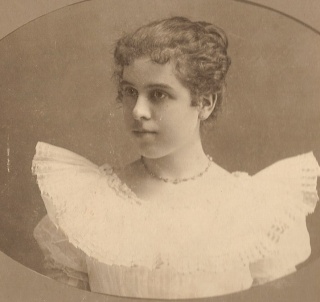 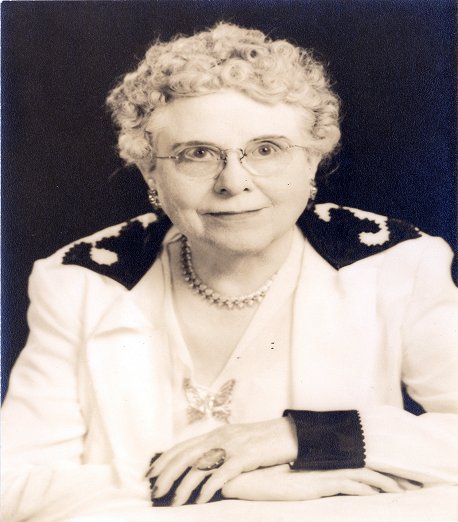
|
| Mary Evelyn Robinson 1874-1955 |
|
When my Aunt Mary died in 1955, I was not quite eight years old. My memories of her are those of a child who saw her once or twice a year, always with other adults who had many things to talk about and were not always interested in the two children who were brought along. Mary was interested and did talk to me.
I remember her as a pretty lady, with snow white hair who lived in a wonderful house with fantastically carved Victorian furniture and stuffed with books and countless other very interesting things she had collected in her life. Her back garden was filled with flowers and she had a tadpole pond. My brother and I spent many wonderful hours fishing in that tadpole pond. Aunt Mary also told wonderful stories and while she told them she drew to illustrate them. One of my best memories of Aunt Mary is sitting with her in the porch swing at my grandmother’s with her telling me a story and drawing pictures of the little girl, Evie. I think now that Evie was probably Mary, because she lived on a farm just after the Civil War and Evie knew all about the frogs in the big swamp below the spring. I knew about the frogs too. I had heard the story from my own grandmother, Mary’s sister. I also remember Aunt Mary and her sisters coming to Washington D. C. for the DAR Continental Congress. They all stayed at our house and they all dressed in beautiful evening gowns and went out every night to the DAR. At some point before her death, Mary put a number of things in a box and labeled it with my name. I am her namesake. For years it was in the care of my grandmother, her youngest sister. In this box was page after page of her poems and stories. Also, there were photographs, her French and Latin textbooks, and a journal written, unfortunately in pencil, during a summer spent in Europe. There was also the silver loving cup she won for her poetry, several first place blue ribbons, a wonderful sequined black chiffon flapper dress she bought in Paris, a golden silk embroidered and fringed shawl, and a hand painted scarf. There were letters that she had received from people she had met on her travels and an invitation to St. James Palace in London to a tea. This was quite a legacy for and eight year old. It is perhaps very fortunate that this box was forgotten by everyone until my grandmother decided that a ten room house was too much for her and it was time to move to a smaller apartment. For, at that time it was rediscovered and I was an adult and old enough to appreciate what it contained. Mary Robinson was born, a mere nine years after the end of the Civil War, on April 24, 1874. She was born and grew up in the community of Waverly in Chambers County, Alabama. Aunt Mary never married, but it is a well known fact that she had a number “beaus”. She died in Birmingham on May 23, 1955, only days after the dedication of her portrait at West End High. She is buried in the Robinson family plot of Canaan Primitive Baptist Cemetery just outside of Waverly. Mary was one of ten children of Helen and Jesse Robinson. She was the eldest girl and the second oldest child. All the Robinson children were educated at home by their mother, who also taught other children in the area. In time, all the children were sent off to college, though not all graduated. Mary was the child who excelled in school and at the time or her death was working on her doctorate. In her teens, Mary was sent to East Alabama Institute in Notasulga where she studied painting and voice. Mary won the gold medal there in 1896 for Declamation. After only 3 years of formal education, she entered Alabama Polytechnic Institute (Auburn University) in the first group of six girls admitted. She graduated in 1899, with honors in the second class with female members. She earned a Bachelor of Science degree. She had been elected Poet Laureate of her class, the only office open to women at that time. After graduation, Mary taught in Salem, Brewton, and Sylacauga, Alabama. She moved to Birmingham, Alabama in 1903, to become the principal of Ensley High. She preferred teaching and in 1905, she went to teach at Bessemer High. From 1906 to 1930, she taught at Phillips High and then went to West End High from 1930, until her retirement in 1944. While at West End, she also served as the head of the science department. After her retirement from the public schools, Mary worked with the Birmingham City Parks and Recreation Department teaching adults art and textile painting. Mary raised some eyebrows when she organized and coached the first girls’ basketball team in the Birmingham schools. She also escorted “her girls” on hikes and study tours. She even took a group down into the Mulga Mines, but they never allowed women into the mines again. Some considered women in mines bad luck. During her years teaching she conducted or assisted on many student tours throughout the western United States and Europe on her summer vacations. In 1927, she spent the entire summer touring Europe. During her years in Birmingham, she never ended her pursuit of knowledge. She enrolled in Howard College and earned her A. B. and M. A. degrees. She also attended during her summer vacations both Columbia University and University of Chicago. When she first came to Birmingham, Mary lived in the Ridgley Apartments. She bought her home at 536 Princeton Avenue when she was asked to take the position of Chairman of the Science Department at West End high. She lived in her home in Princeton Avenue until her death. Mary Robinson was an artist, author and educator. She won several blue ribbons in the Alabama State Fair for her painting. The painting pictured at the end of this volume was her 1947 winning entry. She published numerous short stories and two volumes of poetry and even made a record of some of her poems and the Frog Story. She was president of the Alabama Writer’s Conclave and won first prize for poetry twice in an Alabama Federation Women’s Club contest. Her silver loving cup award was from the Alabama Poetry Society. Mary was a charter member of the Alabama Academy of Science and held office in seven state educational societies. She belonged to University Women of Alabama. Mary belonged to the oldest literary club in Birmingham, the Quivive Club, and served as its president a number of times. Mary was an active and ardent member and worker in patriotic, political, educational, and civic clubs in Birmingham. She also sang with several choral groups. Mary Robinson was the proud aunt to 35 nieces and nephews and another 35 great nieces and nephews. During World War II twenty of her nephews and one of her brothers served in the military. Mary Robinson was a member of the National Society Daughters of the American Revolution, a direct descendant of Cary Cox through her mother’s family. With further research, she claimed at least five ancestors who fought for American independence, one of whom was a signer of The Declaration of Independence, John Hart. She was a member of the United Daughters of the Confederacy, a real daughter; her father was a member of Wheeler’s Cavalry. In 1918, she was Maid of Honor at the Reunion of Confederate Veterans, held in Washington D. C. This was humorously referred to as the only time they ever took Washington. Mary Robinson taught in the Birmingham Schools for 41 years. When you count her years with the Parks and Recreation Department and the years teaching in other jurisdictions in Alabama, Mary Robinson was an active educator for 51 years! |
Double click on article to enlarge - one click to reduce.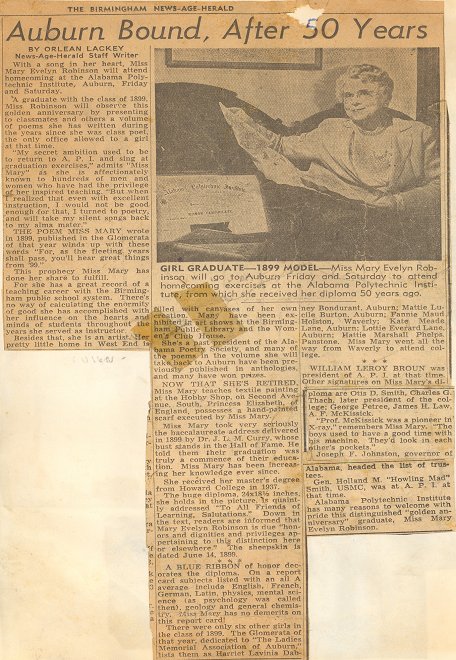 |
Double click on article to enlarge - one click to reduce.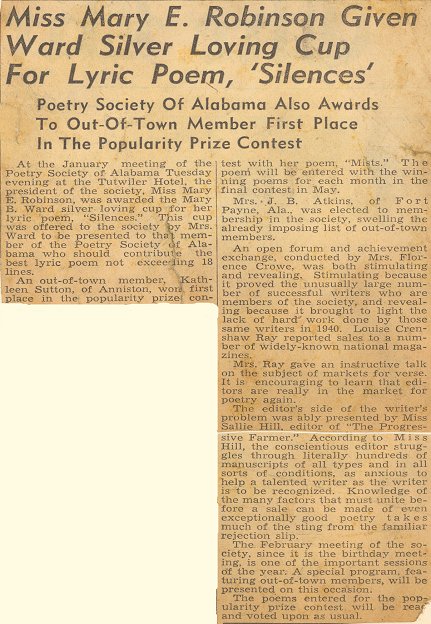
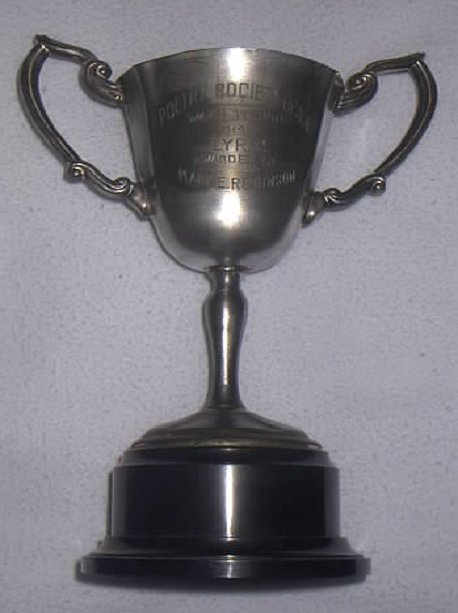 |
This painting was done in 1947. It won the Blue Ribbon in the Alabama State Fair.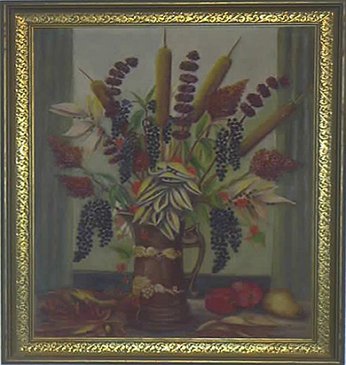
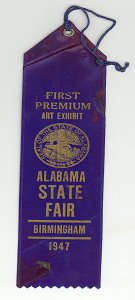 |
These are portraits that Mary painted of her parents Helen and Jesse Robinson.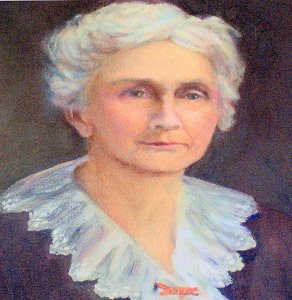
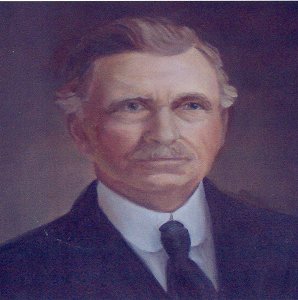
|